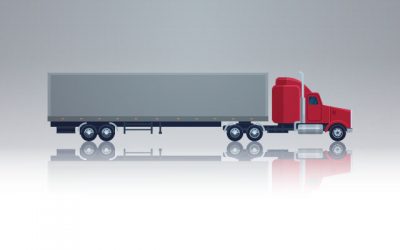What is ELD
The final Electronic Logging Device (ELD) mandate deadline set by the Federal Motor Carrier Safety Administration (FMCSA) is approaching on December 16, 2019.
The ELD final rule is a part of MAP-21, which went into effect in 2017. The rule was passed in a bid to ensure the safety of drivers by creating a safe environment and making it easier to track and manage their duty records.
What does ELD stand for?
ELD stands for Electronic Logging Device (ELD). The Electronic Logging Device (ELD) is a portable device, which records the – Hours of Services (HOS) – of commercial driving automatically.
What is the ELD rule?
ELD mandate makes it mandatory for fleet owners to equip their vehicles with an ELD to record the duty hours, which aims to cut down on driver fatigue to reduce road accidents. The FMCSA has certain rules and regulations for the Hours of Service (HOS) that limits the number of hours a driver can drive in a single day. ELD rule makes it mandatory for fleet owners to equip their vehicles with an electronic logging device to record the duty hours, which aims to cut down on driver fatigue to reduce road accidents
Why the ELD rule is important?
ELD helps drivers to follow the legal limit and help in analysing the vehicle, driving pattern and track the location of the vehicle and drivers and help in keeping the drivers safe. It is believed that driver fatigue is one of the major reasons for road accidents. As per the mandate, most of the commercial motor vehicles need to have an ELD to keep track of the duty hours and analyses the driving pattern
of the drivers. FMCSA strongly believes that this will help in creating a safe environment for
drivers and it will reduce their load.
What is the ELD rule timeline?
The final ELD rule was first published on December 16, 2015, by FMCSA and all
vehicles must be ELD compliant by December 16, 2019. It was executed in two phases – the first
phase was also known as soft enforcement or grace period. FMCSA had given two years’ time for
the fleet owners and drivers to comply with the new ELD rule.
How much does an ELD cost?
As per the FMCSA estimate, the cost of an ELD ranges between $165 to $832 per
year. However, it varies from vendor to vendor. As of now, any normal ELD will cost between
$500 to $850 and these devices do not come with in-built GPS tracking unit. It will cost another $250 for
additional equipment. Also, most of these vendors offer contract which is likely to bind you for a few years.
TXT ELD comes with a monthly
subscription starting from $19 to $40. The device
has in-built GPS tracking unit along with Geofencing feature. This will help
you to locate your fleet at any given point in time and location. Geofencing feature is useful
for Backoffice operation. It will help you in understanding the dispatch time and the gaps which requires
attention.
Backoffice officials can fence a certain boundary area for the fleets which requires attention. As soon as the
fleet enters the boundary, the Backoffice will receive a notification and can result in early or timely
dispatch.
If you register with TXT ELD it is going to save you at least 50% of the cost, you will spend
for the same device to any other vendor. TXT ELD comes with four different and customized
monthly subscription plans specifically developed keeping the requirement of your fleet in mind. If you own 10
or more vehicles in your fleet, there is no upfront cost for our premium subscription plan costing $40 per
month.
Can I unplug an ELD?
An ELD is simple to plug and unplug. ELD is directly connected with the engine
vehicle control module unit and can be undocked whenever required. When it is unplugged, it does not record any
data. TXT ELD comes with a 9-meter-long connector which helps the driver to undock the device
and show it the enforcement officers on either side of the truck. This helps you in saving time during
inspection.
How to install an ELD?
Can Truck drivers still use paper logs?
Every commercial truck driver and fleet owners must comply with the use of ELD with the deadline of
December 16, 2019. Only in case of any malfunctions, drivers can use paper logs for a maximum of 8
days. Use of ELD was made mandatory as driving for long hours causes driver fatigue, which results
in dangerous road accidents. In a bid to curb the number of road accidents caused by trucks, ELD
was made a mandate. The device eliminates the use of paper logs and manual intervention of drivers.
Earlier, the drivers used to spend a lot of time filling out the HOS logbook due to this the
drivers were forced to drive for long hours to cope with their targets. ELD also helps the fleet
owners and drivers in improving their productivity, maintaining their record and warning them ahead of any system
malfunction.
Who all are exempted from use of ELD?
As per the FMCSA, three groups are exempted from using ELDs.
- Drivers who use paper logs for 8 days during a 30-day period
- Driveaway-towaway drivers
- Drivers of vehicles manufactured before 2000
The FMCSA has also extended the deadline for certain companies:
- The United Parcel Service, October 2022
- Motion Picture Association of America, January 2023
- Truck Renting and Leasing Association, October 2022
The FMCSA strongly believes that the ELD mandate will avoid thousands of road
accidents annually and end up saving billions of dollars as paperwork expenses.
What are the Hours of Service (HOS) rules?
Hours of Service (HOS) rules regulate driving hours for drivers operating a commercial motor
vehicle (CMV). According to the estimate, a total of $705 is saved annually as paperwork savings. This is just an
estimate. ELDs are expected to reduce the time required to maintain log by 4.5 minutes per
HOS or around 20 hours annually as per FMCSA.
Can I drive home on personal conveyance?
As per ELD rule, the personal conveyance is used to commute to and from home. However, if the
driver is leaving from home to the pickup location directly then it would be considered as on-duty and not under
personal conveyance. In the United States, there is no set limit on distance for the status on ELD
to change from personal conveyance to driving. But in Canada, the ELD rule states that after 75km
the status on ELD will automatically change from personal conveyance to driving.
What is the 14-hour DOT rule?
As per the DOT rule, any truck driver should drive 11 out of 14 hours with 10 consecutive hours
recorded as off-duty.
How long do we need to keep driver logs?
Truck drivers are supposed to keep logs and supporting documents for six months.
What all is included under the driver’s daily log?
The drivers must keep track of their time through a daily log. It must include total miles, truck,
tractor or trailer number, name of the carrier, main office address, driver’s signature, name of co-driver, time
base to be used, remarks, total hours, shipping document number(s) or name of shipper and commodity.
What are the best ELD devices?
TXT ELD is one of the best ELD devices available in the market at a reasonable
price and excellent features starting from $19 as a monthly subscription. To know more kindly,
visit https://www.txtesolutions.com/login/subscription
What is Canadian ELD rule?
From reducing administrative costs to preventing errors in logbooks to reducing driver’s fatigue to
creating a safer environment to ensuring good cross-border relations. The ELD mandate is the next
big thing for the fleet industry. The Canadian Council of Motor Transport Administrators (CCMTA)
released the final rule outlining the Canadian ELD requirements on June 13, 2019. The fleet
industry is expected to adhere to the deadline of June 12, 2021. While the Canadian ELD mandate is
developed to create a safer environment for drivers but the major reason is also to improve cross border trade with
the United States. Maybe one of the reasons why the Canadian ELD mandate is developed on similar
lines to the US ELD mandate.
What are the implications of ELD mandate violations?
During the soft enforcement period, ELD violations did not affect CSA scores. But the full
enforcement period of the FMCSA’s ELD mandate not only affects overall CSA score,
can end the driver’s service period or put your entire fleet into jeopardy.
As per FMCSA guidelines, “a failure to provide supporting documents in the driver’s possession upon
request” carries the most violation points. It’s 7 out of 10. Failing to maintain an ELD user
manual can attract 1 violation point. No record of duty status can attract 5 violation points. ELD
display screen cannot be viewed outside of the vehicle can attract 5 violation points. Bad CSA score may attract
more roadside inspections and affects business opportunities for your fleet.
If a non-exempt driver does not have a working ELD the authorities can put him/her out-of-service
for at least 10 hours. If the driver is still using paper logs, they won’t be allowed to reach their destination and
only deliver the goods after their 10 hours of the out-of-service period is over. If the driver is caught without
ELD repeatedly, it can put both the driver and fleet into jeopardy and may attract further
enforcement actions.
As per the estimate, when a driver is out-of-service each day he/she loses around $260 or more. Moreover, if the
driver gets an out-of-service order the authorities are likely to tow away the vehicle, which will again cost up to
$350. As per the FMCSA mandate, fines for ELD violations is between
$1,000-$10,000. As per the North American Transportation Association, if no record of duty status is found then it
can attract fines up to $2,867.
What are the rules for rest breaks?
The driver must take a minimum of 30-minute break or sleeper-berth period after every eight hours
of their drive time. Any 30 minutes off-duty time including meals, counts as a break and the breaks also comes under
the 14-hour driving window.
What is the adverse driving conditions exception?
It refers to unexpected driving delays due to uncontrollable circumstances, such as bad weather, lane closures etc.
Common driving conditions, such as rush-hour traffic or construction projects, are not covered under any exception.
Under the exception rule, one can drive for an extra two hours, increasing 11-hour driving limit to 13 hours, based
on how far one can have driven in normal conditions. However, the extended driving hours should be completed within
the 14-hour driving window.
Does every driver, including occasional drivers, must comply with the HOS regulations?
Any driver who is operating a “commercial motor vehicle” defined under section 390.5 of the federal regulations must
also complete a logbook page for any day. This includes driving commercial motor vehicle for the
previous seven days unless it comes under an exception on some of those days.
What should the driver do, if an ELD stops working for some reason?
The driver of the vehicle must: A) note the failure of the device. B) recreate driver’s log for the
current day as well as the previous seven days, leaving for days which driver already has the records. C) continue
to prepare a handwritten log until the ELD is working again. D) notify the carrier within 24 hours
of the ELD’s failure.
When does an ELD switch to driving mode?
If a vehicle is moving at more than 5 miles per hour, the ELD will automatically switch to driving
mode.
What does an ELD record automatically?
An ELD records data for driving status – on-duty or off-duty. It creates an automated log for hours
of service (HOS).
What is IFTA?
The international fuel tax agreement (IFTA) is an arrangement among US states and Canadian
provinces on taxes paid on motor fuels. Ifta allows commercial motor carriers to register in one state and have
these tax assessments paid out to all participating areas according to their fair share.
Who must register for IFTA?
The commercial carriers who operate an IFTA-qualified motor vehicle in commerce must participate in
IFTA. A qualified motor vehicle is one used, designed or maintained to transport property or
persons that is: three or more axles regardless of weight, or two axles with a gross vehicle weight over 26,000
pounds; or used in combination with a total gross vehicle weight over 26,000 pounds.
Which states do I register for IFTA?
You only need to register with one state — your base jurisdiction. Under IFTA, a motor carrier’s
base jurisdiction is the state or province: where its qualified motor vehicles are registered, where it maintains
operational control and operational records of its eligible vehicles, and that qualified motor vehicles travels in.
What must be included in an IFTA trip report?
IFTA trip reports must include the following: date of trip (start and end), trip origin and
destination, routes of travel, beginning and ending odometer reading, total trip distance, distance by jurisdiction,
vehicle identification number, vehicle fleet number, registrant’s name.



